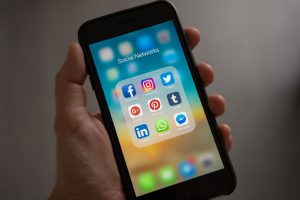Black Friday: How Did it Begin
The story of Black Friday is a bit of an interesting tale, as most ‘holiday’ origin stories are. In summary, back in the 19th century, most store owners stood by the rule that the holiday shopping season didn’t start until after Thanksgiving. So naturally, the day after Thanksgiving, that Friday, became a huge day for promotions and sales related to the upcoming holiday season.


Since 1952, the post-Thanksgiving holiday shopping sales day has skyrocketed to unbelievable heights. Almost every major and minor brand and store has jumped on this opportunity to boost their revenue as the major shopping season begins. But how has the Black Friday shopping day changed over the years? What were the previous trends? Who are the big players in the market?
Opening Doors Before Friday
Within the past decade or so, from 2009 to 2018, we’ve seen some incredible trends and changes to the traditional shopping behavior and patterns. In that general time frame, the big players in the shopping race have been Walmart, Best Buy, Target, Toys R Us, Macy’s, Kmart, Sears, JCPenny, Old Navy, and Ulta.
Only a few companies began opening their doors on Thanksgiving; before that, opening on that day was unheard of. The first businesses to open were Sears and Walmart in 2010, then Target in 2012, and JCP and Macy’s in 2013. At that point, companies were discovering the value of opening early and were quickly following the trend.


Sales Before November
Eventually, businesses began to do away with the rule that the holiday shopping season didn’t start until after Thanksgiving. Because of this new room for opportunity, and the rise of the commercially accessible internet in 1995, companies from the later 1990’s and well into the late 2000’s were using email marketing, online advertising, and social media to advertise the shopping deals and opportunities earlier in the season, starting from October and even September!
With this, new trend, companies were able to take full advantage of the shopping window. They were able to showcase key products much earlier in the season to generate hype and hopefully more sales in the process. One great example of this was in 2013 when Amazon launched it’s ‘Countdown to Black Friday’ campaign, where, starting November 1st, every 10 minutes a new deal was released for Black Friday.
By utilizing opportunities like this, businesses could get a jump start on the holiday season shopping, advertising products that consumers could buy again later in the season.
Mobile e-commerce on Black Friday and the Inception of Cyber Monday
With the creation of Cyber Monday and the invention of the modern smartphone, the face of Black Friday shopping changed forever. Cyber Monday meant that businesses and consumers didn’t have to cram all of their shopping and deals into one day. They could spread it out over two.
With the rise of the internet and mobile phone usage, businesses were beginning to shift from in-store deals to out-of-store deals. This also meant that people didn’t have to be physically in the store to take advantage of the sales, which resulted in more overall revenue. In 2016, for example, it was recorded from Thanksgiving day, BlackFriday, and Cyber Monday, that online sales totaled in at $12.8 billion, with Cyber Monday driving home $3.45 billion.


In 2009 this concept was taken to the next level. With the creation of the modern smartphone, businesses were able to take full advantage of the deals that Black Friday had to offer. Having a pocket computer brought along an endless amount of possibilities. Consumers were not only shopping on the fly but also engaging in research for the various deals and the companies that were hosting them.
According to two reports collected from 2014-2017, mobile searches with the phrase ‘Black Friday’ increased by 80% and mobile searches for ‘_____ brand’ rose sharply in the 2016 holiday season and has been climbing since. From the past few years, consumers have been using their phones more and more not even to do purchases, but for product information, price comparison, and check online reviews.
Millennial Shopping and Social Media
With the rise of social media in the past decade, businesses have been able to reach consumers better than ever. From a report in 2012, it was recorded that during the five day period from Thanksgiving to Cyber Monday, over $150 million in revenue that was generated from social media referrals. Not only that, but engagement with brands on various social media channels have spiked leading up to and during the Black Friday/Cyber Monday shopping time frame.


This trend developed mainly because as millennials group grows older, they begin to hold a larger percentage of the consumer market. Since this grouping of people is primarily on the mobile social media platforms, that’s where companies are going to flock to.
But with a new demographic of people comes different trends. Some reports show that in the past year or so Black Friday has dwindled in popularity. Up to 75% of consumers from ages 13-35 are starting to spread their shopping out over the course of the holiday season.
With modern mobile shopping, you don’t need to make shopping into a whole event. Now you are only a few clicks away from buying your desired product from your sofa! Because of this people are participating more and more in deals on Thanksgiving Day, Green Monday (the second Monday in December) and other days throughout the month, rather than just on Black Friday.
Where Will Trends Land This Holiday Season?
Where will trends land this holiday season? That’s a great question. Based on the previous consumer trends, there are many places Black Friday 2018 could go. In next week’s article, we will dive into the projected trends for this year’s Black Friday. Stay tuned to learn more!
Information received from:
https://www.forbes.com/sites/forbescommunicationscouncil/2017/11/07/black-friday-and-cyber-monday-trends-for-2017/#156f2ce17397
https://blackfriday.com/news/black-friday-trends-and-predictions
https://www.thebalance.com/what-is-the-history-of-black-friday-3305711
https://www.thinkwithgoogle.com/data/holiday-search-statistics-store-hours/
